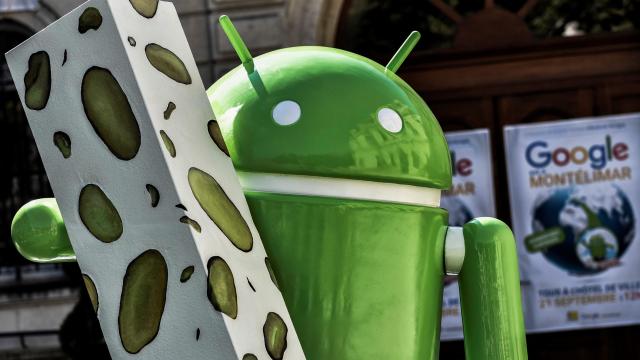While Google is infamous for killing off its creations, there’s a good chance you’ve never even heard of Android Things — a platform Google launched in 2018 for the Internet of Things. And although Google said last year it was shifting Android Things away from the smart home, it’s now officially pulling the plug on the whole project.
Ars Technica first spotted the news in an Android developer FAQ, which revealed that the Android Things console will no longer accept new projects from Jan. 5, 2021. From there, developers already using the platform can continue to roll out updates until Jan. 5, 2022. After that, all data and projects will be kaput.
According to Ars Technica, Android Things was meant to be a simpler OS for IoT devices that promised regular security updates, an established SDK, and access to Google’s cloud platform. Plus, it was compatible with popular hardware like Raspberry Pi. The problem was Android Things gadgets were too big, too expensive, and too power-intensive compared to other IoT devices. Hence, why last year Google decided to shift Android Things as a platform to smart speakers and displays…even though Google itself preferred the Google Cast platform for its own smart speakers and displays. And you know, never actually built an Android Things device.
[referenced id=”1527670″ url=”https://gizmodo.com.au/2020/11/im-tired-of-broken-smart-homes/” thumb=”https://gizmodo.com.au/wp-content/uploads/2020/11/10/sxfhwt3udnknqdru8o58-300×169.jpg” title=”I’m Tired of Broken Smart Homes” excerpt=”While smart homes can be pretty convenient, they also require a certain type of never-ending vigilance. Specifically, you have to keep up with which companies support what platforms, and if any mergers or acquisitions have royally screwed your entire setup. Then, you have to decide whether you’re going to go…”]
Womp womp. It might be hard to care about the death of a platform that never really made a splash, but it’s a good example of IoT’s major problems. Namely, the incredibly short lifespan of products and an overly segmented market. In this case, Google had initially promised to support Android Things for three years — which would’ve meant supporting it through May 2021. However, in reality, the last release was August 2019. Even a maths dummy knows that’s much shorter than the promised three years.
Anyone who’s ever invested time and money into building a smart home can testify that the rapid death of IoT gadgets and companies is a huge headache. Android Things never really took off so thankfully, the impact on consumers is likely to be minimal. However, it’s a reminder that this concept of gadgets that seamlessly “talk” to each other is still kind of half-baked.
In an ideal world, you could buy whatever smart home products are best suited to your needs, regardless of the manufacturer. A smart speaker from Google, an Apple TV, Hue light bulbs, a Samsung fridge, and so on and so forth. Except right now companies are all fighting to push their individual ecosystems. After all, why play nice with others when you can trap a consumer into your platform? Apple products work best with other Apple products. The same goes for Samsung. Amazon is also trying to build synergy via Ring and its collection of Echo devices. This leaves third-party companies at a disadvantage because they have to work with these bigger companies to include Alexa, Google Assistant, and HomeKit compatibility. If they don’t have at least that, there’s less incentive for a consumer to buy a third-party product as it becomes so much harder to integrate it into an existing setup. By the time Android Things launched, the lines between established ecosystems were already drawn.
At the end of the day, Android Things is just yet another story of a pretty decent IoT concept that just couldn’t hack it in the real world. And until the underlying reasons why it died are addressed, the smart home will continue to be a hot mess.
Editor’s Note: Release dates within this article are based in the U.S., but will be updated with local Australian dates as soon as we know more.
